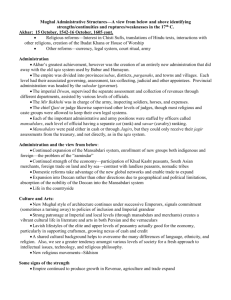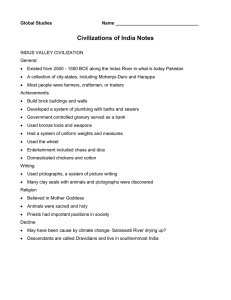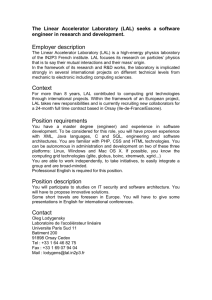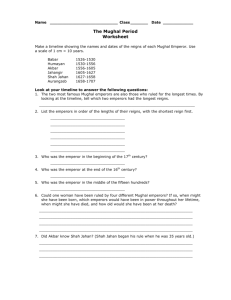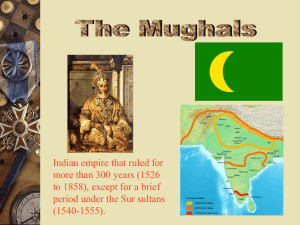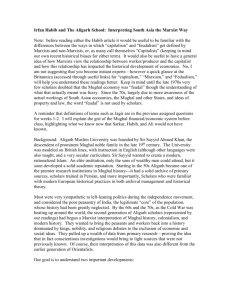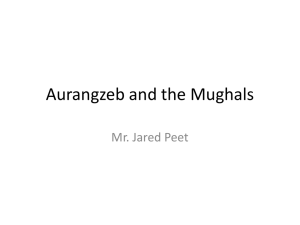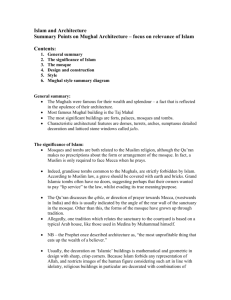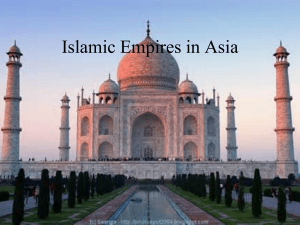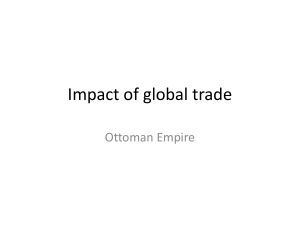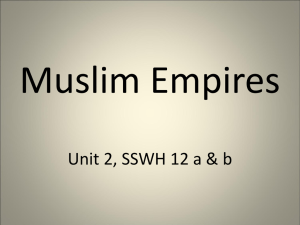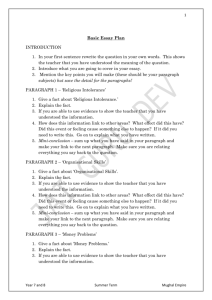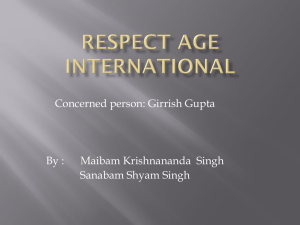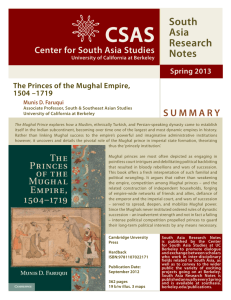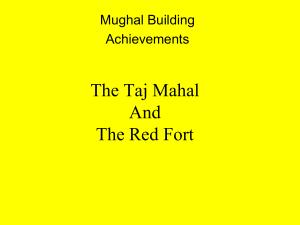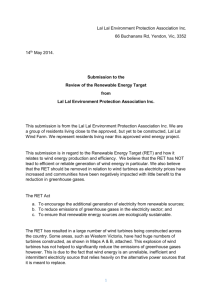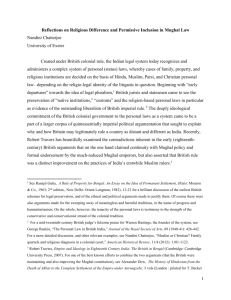Introduction to Brajbhasha historical poetry Session leader: Allison
advertisement
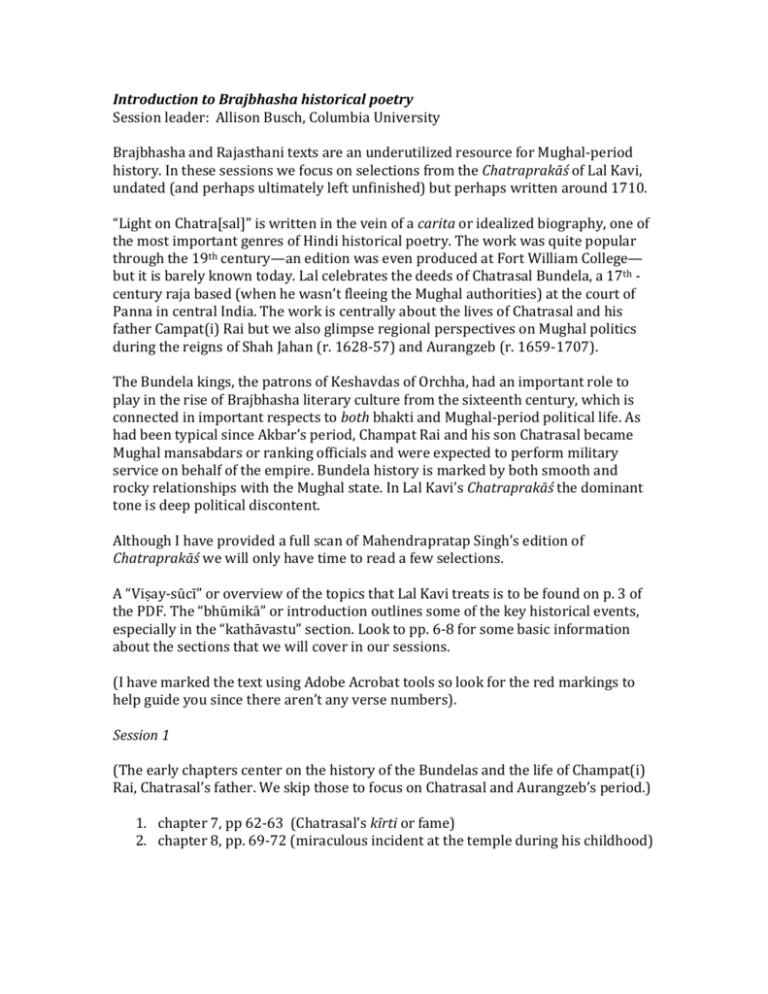
Introduction to Brajbhasha historical poetry Session leader: Allison Busch, Columbia University Brajbhasha and Rajasthani texts are an underutilized resource for Mughal-period history. In these sessions we focus on selections from the Chatraprakāś of Lal Kavi, undated (and perhaps ultimately left unfinished) but perhaps written around 1710. “Light on Chatra[sal]” is written in the vein of a carita or idealized biography, one of the most important genres of Hindi historical poetry. The work was quite popular through the 19th century—an edition was even produced at Fort William College— but it is barely known today. Lal celebrates the deeds of Chatrasal Bundela, a 17th century raja based (when he wasn’t fleeing the Mughal authorities) at the court of Panna in central India. The work is centrally about the lives of Chatrasal and his father Campat(i) Rai but we also glimpse regional perspectives on Mughal politics during the reigns of Shah Jahan (r. 1628-57) and Aurangzeb (r. 1659-1707). The Bundela kings, the patrons of Keshavdas of Orchha, had an important role to play in the rise of Brajbhasha literary culture from the sixteenth century, which is connected in important respects to both bhakti and Mughal-period political life. As had been typical since Akbar’s period, Champat Rai and his son Chatrasal became Mughal mansabdars or ranking officials and were expected to perform military service on behalf of the empire. Bundela history is marked by both smooth and rocky relationships with the Mughal state. In Lal Kavi’s Chatraprakāś the dominant tone is deep political discontent. Although I have provided a full scan of Mahendrapratap Singh’s edition of Chatraprakāś we will only have time to read a few selections. A “Viṣay-sūcī” or overview of the topics that Lal Kavi treats is to be found on p. 3 of the PDF. The “bhūmikā” or introduction outlines some of the key historical events, especially in the “kathāvastu” section. Look to pp. 6-8 for some basic information about the sections that we will cover in our sessions. (I have marked the text using Adobe Acrobat tools so look for the red markings to help guide you since there aren’t any verse numbers). Session 1 (The early chapters center on the history of the Bundelas and the life of Champat(i) Rai, Chatrasal’s father. We skip those to focus on Chatrasal and Aurangzeb’s period.) 1. chapter 7, pp 62-63 (Chatrasal’s kīrti or fame) 2. chapter 8, pp. 69-72 (miraculous incident at the temple during his childhood) Session 2 1. chapter 9, pp. 73-75 (still just a boy, Chatrasal learns of the death of his parents—they had been traduced by regional rivals and committed suicide when they ran out of options) 2. chapter 10, pp. 79-80 (Chatrasal and his brother Angad become mansabdars) 3. chapter 11, pp. 85-87 (political disillusionment) Session 3 1. chapter 11, pp. 87-93 Chatrasal meets the Maratha leader Shivaji; critique of Aurangzeb’s temple destruction Bonus Round This unit has been allotted an extra session in the schedule. If we still need to finish some material from the first three sessions we may opt to do that. It would also be interesting to read some complementary poems on Mughal politics written by one of Shivaji’s court poets: Kavi Bhushan. Bhushan’s Śivrājbhūṣaṇ (1673) is a rītigranth that explains the Indic system of alaṅkāras or figures of speech. In each of the following sets you will first read the lakṣaṇ or definition verse; then turn to the udāharaṇ or illustration. Bhushan typically used his udāharaṇ verses as a vehicle for political commentary. pp. 85-86, vv. 161; 163 pp. 123-24, vv. 285; 289 pp. 130-31, vv. 310-311
